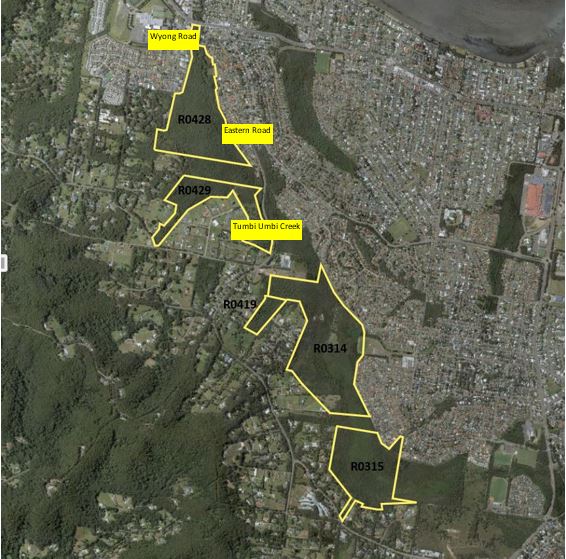Vast wetland areas comprising six reserves in Blue Haven and Tumbi Umbi will be forever protected in a conservation management plan set in motion by Central Coast Council.
Blue Haven wetlands are adjacent Wallarah Creek and just west of the Pacific Hwy while Tumbi Umbi wetland is between Wyong Rd and The Entrance Rd along Tumbi Umbi Creek.
The six reserves in those wetland areas cover 161.8ha and include Blue Haven Reserve, Tumbi Umbi Wetland South and North, Sir Joseph Banks Bushland, Eric Malouf Close Reserve and Tumbi Umbi Wetland Beaverdale.
Biodiversity assessments have been done and two detailed management plans have been prepared for the wetland reserves, including the 20-year costs for implementation.
Council has made application to the Biodiversity Conservation Trust to enter into Biodiversity Stewardship Agreements which will generate biodiversity credits that can be sold to produce an income stream for Council to ensure ongoing maintenance of the biodiversity values of the wetland areas.
Director of Environment and Planning, Alice Howe, said the process was to reach agreement with the Trust about the dollar value of the credits to reflect the biodiversity values of the sites, and then the landowner (in this case Council) is paid the value of the credits.
“We have an indicative idea of the valuation of the credits but it’s really about the Trust making us an offer that we decide to be reasonable and the key issue is whether it will provide enough funding for us to be able to manage those sites in perpetuity,” she said.
“We should know in a couple of months if those credit values are satisfactory to us and if they’re not we will continue to seek buyers for the credits, but that might take some time.”
Council will seek the highest negotiable price, depending on what the market is prepared to pay, and credits can be sold through a Biodiversity Stewardship Agreement to anyone, such as the Trust, to a developer needing to offset a project’s impacts on biodiversity, to government agencies for conservation outcomes or philanthropic organisations, but typically credits are made available through a “bank” held by the Biodiversity Conservation Trust.
“The whole point of this exercise is to be able to raise funds to conserve the land at Blue Haven and Tumbi Umbi wetlands,” Howe said.
“They’ve been only lightly maintained up to this point as Council has a very limited budget and we’ve been relying on environmental grants which has just covered some project-based things like bush regeneration, some fencing or access controls.”
The income generated from biodiversity credits will go into a new Central Coast Conservation Fund which will be restricted funds, only to be used for implementation of Council’s adopted Biodiversity Strategy and specific on-ground conservation works at the wetland sites.
Council staff are currently working on a draft policy for the Central Coast Conservation Fund and when it’s ready it will go on public exhibition for community consultation.
Establishing conservation agreements to improve the long-term protection of Council’s natural areas was one of the actions in the Central Coast Biodiversity Strategy adopted by Council in October 2020.
In 2021 Council entered into its first Biodiversity Stewardship Agreement to finance the conservation of two reserves in Glenning Valley – Bomaderry Crescent Bushland and Bundeena Road Bushland.
The biodiversity credits generated by this agreement were sold to Transport for NSW to meet their offset requirements for road developments on the Central Coast.
Sue Murray



